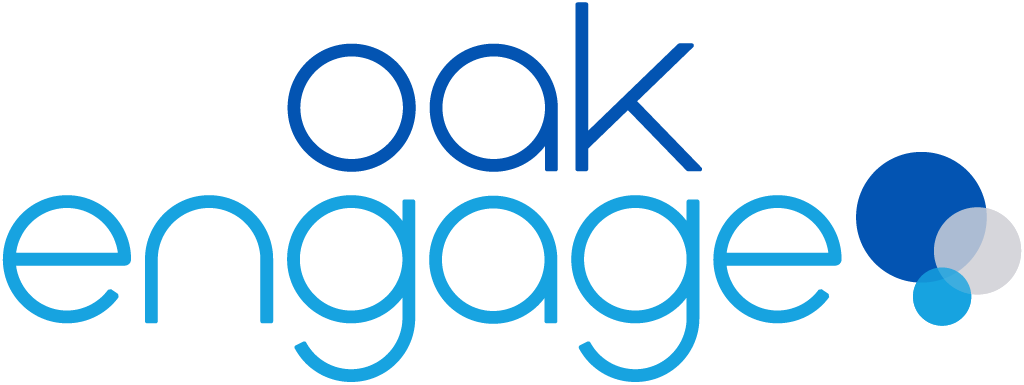Employee experience is becoming more important now than ever before. With money becoming less of a motivator, people are becoming driven by purpose and meaningful work.
Curating a great experience for employees will set your business above the rest and boost employee retention.
In this blog post we’ll be covering:
- What is meant by employee experience?
- The rise of employee experience (employee experience statistics)
- The importance/business impact of employee experience
- Challenges of employee experience in the workforce today
- Employee experience framework
- Steps to improve employee experience
- Employee experience examples
What Is Meant by Employee Experience?
The very first moment people interact with your company contributes to the employee experience. The individual will form an opinion on your company.
Hiring, onboarding, employee retention and exiting the company all contribute to employee experience. These are stages in the employee lifecycle. Then there are elements that contribute to employee experience. Your physical office space, company culture and technology all shape the employee experience.
In their Employee Experience Index, IBM Smarter Workforce Institute defines employee experience as “a positive and powerful – and ultimately human – experience, in which employees are able to invest more of their whole selves into the workplace.”
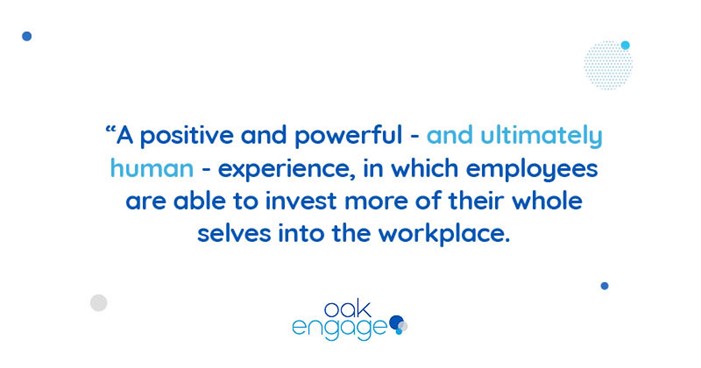
This blog will show you how you can create a positive and powerful employee experience.
The Rise of Employee Experience (Employee Experience Statistics)
Why has employee experience become so important?
Back in 2018 Forbes called that that would be the year of employee experience. Rather than focusing on the customer experience the importance of employee experience emerged. Along with the idea that when you look after your employees, they look after your customers.
COVID 19 has only emphasised the importance of employee experience. It has resulted in the acceleration of digital transformation and placed a huge focus on employee wellbeing.
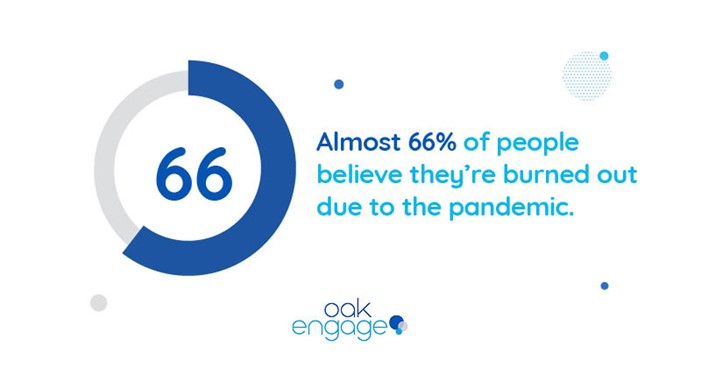
Burnout reached an all time high and almost ⅔ of people believe they’re burned out due to the pandemic. Employees are now considering what is best for them and what they want from work:many are quitting their jobs in search of something new. This was the start of ‘The Great Resignation’. The top reasons people left their jobs were:
They’re in need of a better work-life balance: Glassdoor research found that 87% of employees now expect employers to support a healthy work life balance, suggesting that it would help greatly in preventing burnout. Companies who make the connection between health and happiness will be resulted with a resilient and loyal workforce.
They’re searching for a career with purpose: The Cone Communications Millennial Employee Study found that 64% of Millennials won’t take a job if their employee doesn’t have a strong CSR policy. 83% would be more loyal to a company that helps them contribute to social and environmental issues. These figures will most likely increase as millennials and gen - z begin to make up the majority of the workforce.
They want to feel recognised for their talents and skills: The link between recognition and performance is strong. 82% of employees wish that they received more recognition and that 90% of employees say that recognition motivates them to work harder.
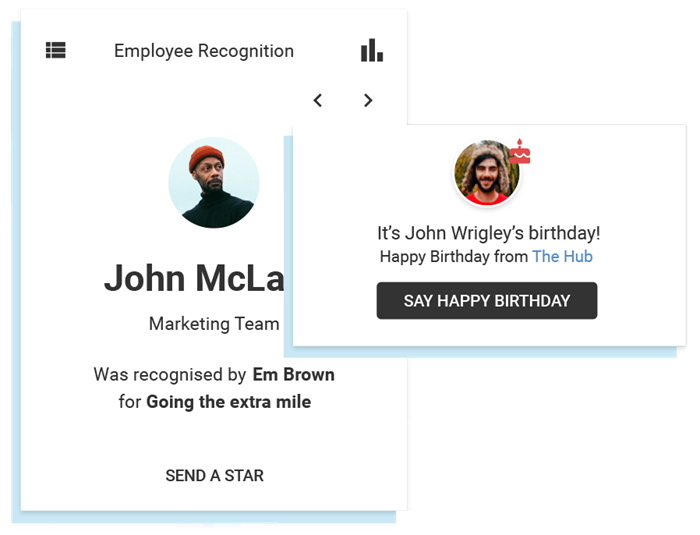
Make sure you’re including employee recognition as part of the retention stage in your employee framework. Why not take a look at Employee Recognition In The Workplace: A Complete Guide for ideas on how you get started.
It's vital for companies to create the best employee experience for their organisation so that they can attract the right talent. By creating a good employee experience your business will reap the rewards.
The Importance/Business Impact of Employee Experience
Having a positive employee experience also affects the results of your business. Ensuring employees have a positive experience will have a ripple effect across all areas of your company. Take a look at these statistics:
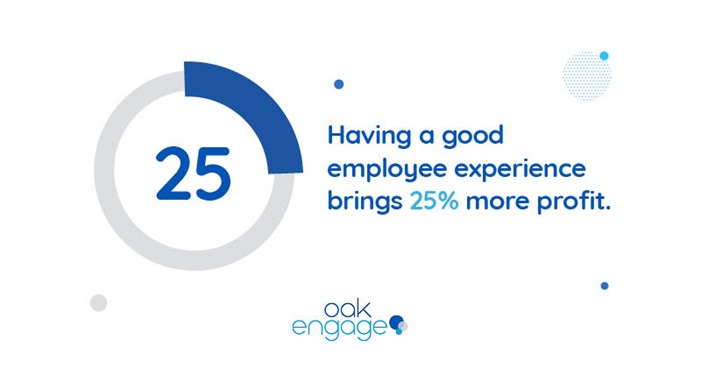
- Having a good employee experience brings 25% more profit to businesses compared to competitors with poor employee experience. (MIT)
- Leaders in employee experience have 4x higher than average profits, 2x higher than average revenues and a 41% reduction in Absenteeism. (SAP Success Factors)
- Having disengaged employees can cost companies up to $550 billion dollars a year. (Gallup)
Essentially, if you look after your employees, they’ll look after you - and your company!
Challenges of Employee Experience in The Workforce Today
There are a number of core components that create a good employee experience. Company culture, the physical work environment and the technology you use in your workplace. Coupled with pandemic and remote work environments it can be even trickier to get the employee experience right.
Company Culture: Your culture connects everyone within your business. It also underpins what it’s like to work for your company. Having a good company culture has a huge impact on performance and feelings of belonging. Make sure you’re using the right tools and tech to keep your workforce engaged and connected. The features of a social intranet will help to keep your company culture alive.
Physical Work Environment: The physical work environment has a huge effect on your employees. Is it comfortable? Are there quiet and collaborative spaces? Does it have a kitchen?There is a lot to think about when creating a good office environment. From colour and lighting to how the company culture can thrive in the office/ location of the office.
Ensure remote and hybrid employees have everything they need to be able to do their jobs. Share resources that will encourage employees to create spaces where they can focus on their work properly and be productive.
Remote work can be a struggle for many employees. It can be harder to motivate yourself and can be very isolating. Place a focus on wellbeing and keeping everyone connected during this time by using a tool such as an intranet.
Schedule regular meetings and check-ins to chat to employees. You could even create wellbeing and social hubs so employees can access resources and keep teams connected.
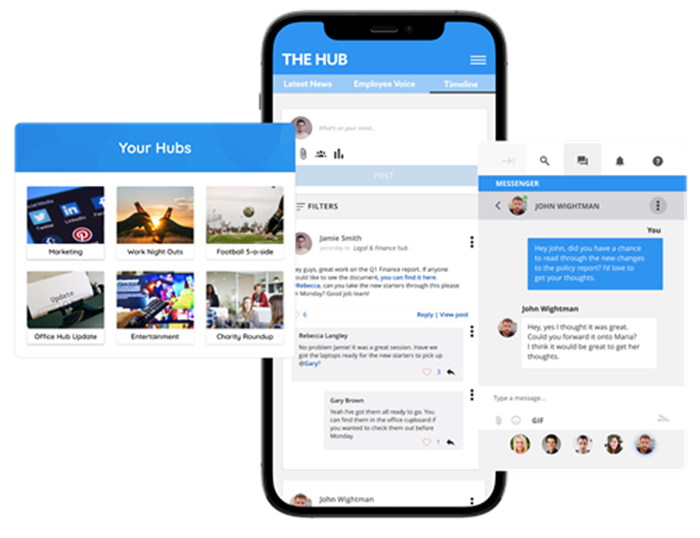
Workplace Technology: Using the best tools is when you get the best results. Ensure your tech is up to date, easy to use and allows your employees to do their jobs. Technology can be one of the main reasons that employees leave their jobs. Ensure your tech allows employees to collaborate efficiently and with ease.
Need tips on engaging remote employees? Our 12 tips help to create a positive employee experience for remote and hybrid employees.
Employee Experience Framework
An employee experience framework is made of milestones in the employee experience lifecycle. As a business it’s important to work out how you can enhance each one for employees to have the best experience.
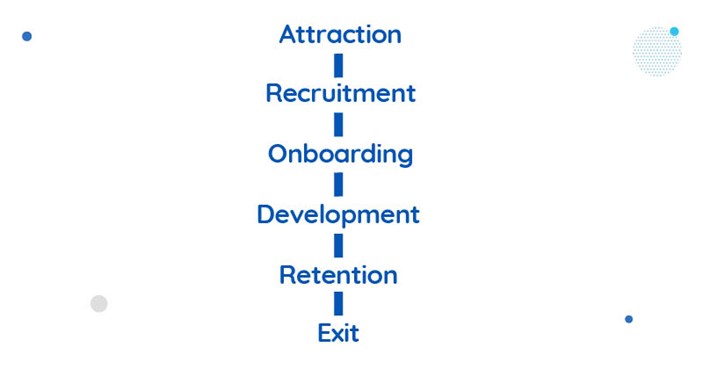
These milestones are: Attraction, Recruitment, Onboarding, Development, Retention and then finally, the exit from the company.
Attraction: This is the stage where you are attracting employees to your company. It’s a critical stage for company growth. This stage is where your ‘Employer Brand’ comes in. This is how your company comes across to prospective employees and stakeholders.
Create a positive perception of your brand by raising awareness of your company. You can do this through your website and blog. Creating a good culture that your employees shout about is key in attracting top talent. Finally, offer competitive benefits that show you value and care about your employees.
Recruitment: The best recruitment plans offer a positive candidate experience. There are a number of ways you can improve the recruitment process. Ask your team for referrals, your employees are likely to know someone fitting for the role.
Involve your employees and be specific in who you’re searching for, pinpoint exactly who it is you need. Hiring focused on clear criteria and generating data that can be used to inform future hiring is key to a good employee experience.
Onboarding: Onboarding is another critical step for employees. 69% of employees who have a positive onboarding experience are more likely to remain with the employer for three years. Companies that focus on onboarding retain 50% more new employees than companies that don’t.
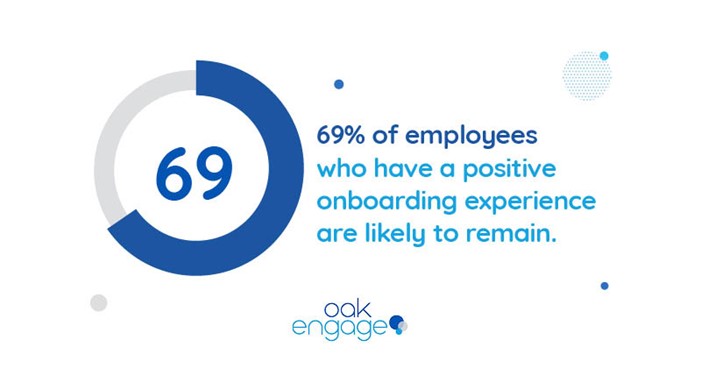
This is the stage where employees should be getting made to feel welcome, settling into their job role and aligning themselves to their role. The values of the company should be clearly communicated to employees.
Make sure you provide employees with a job description, vision and values. Line out your expectations from them as a new hire and be sure to check in with them regularly.
Development: Once settled in it’s great to get into the habit of encouraging professional development amongst your employees. This will mean they can thrive in their role and progress within the company.
Encourage team members to be responsible for their own development. When you notice employees progressing and learning, recognise and reward. A little appreciation goes a long way.
Retention: This is where you focus on ensuring employees are happy. This is where you consistently improve elements of your business. Work on creating a good culture, work environment and relationships.
Exit: Treat an employee exit with the same importance as attraction and recruitment. It’s important to ensure that employees who leave do so in a way that doesn’t disrupt the team's workflow.
When employees do exit the company be sure to understand why they’re leaving in their exit interview. Ask for honest feedback and if there are any areas that could be improved on.
Steps to Improve Employee Experience
Start Employee Journey Mapping
Much like customer journey mapping, you can map your employee journey. Employee journey mapping is a way to track the key stages and experiences in the employee framework.
Create a chronological chart to visually capture and examine each step of the employee experience. Discuss the different stages and look for strengths and weaknesses of each and then use your findings to make changes.
We have a handy template for you to download so you can begin mapping your employee journey.
Improve Your Internal Communications
When you get internal communications right everyone will be working to the same song sheet, to achieve the same goals. It’s also crucial for creating the right company culture and belonging for employees.
Follow these 11 Internal Communication Best Practices to engage and motivate your employees. But first and foremost make sure you're utilising the right tools, such as an intranet, to ensure your announcements and messages are received by all your staff.
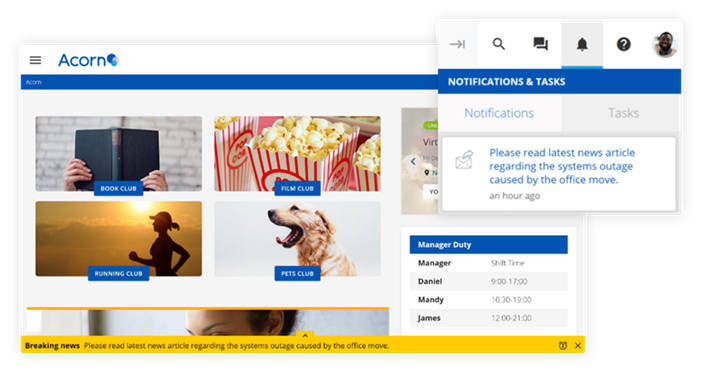
Place a Focus on Wellbeing
Health and well-being are incredibly important. Health and wellness initiatives promote positive physical and mental wellbeing amongst your staff. Your employees will be rested, and productive and will come to work every day with a positive outlook and attitude towards work.

Need ideas? Giving employees money towards a fitness initiative of their choice is a great start. It encourages employees to pursue passions or try new ones.
Introducing flexible working options gives employees the chance to have a real work-life balance.
Conduct Stay Interviews
Stay interviews are a really powerful way of gathering feedback from current employees. You can get a clear idea of what’s keeping employees at the organization. You can also deep dive into where improvements can be made, and what may cause people to leave for pastures new.
By identifying and addressing any issues early on, you can shape the employee experience to be a positive one.
Offer Training and Development Opportunities
Giving your employees a career path to progress through will motivate them to work hard. Employees are more likely to stay with your company if they know there’s room for career advancement. Having programmes in place for employees to improve skills and develop their skills is essential.
Employees will feel motivated through their professional development to achieve their goals.
Employee Experience Examples
With so many businesses out there, employee experience isn’t prescriptive and there isn’t a one size fits all approach.
Here's a list of companies that are doing it right. Many of these companies were voted in the top 10 of Glassdoor's Best Places to Work list. They're leading the way in the experience they offer for their employees:
Patagonia
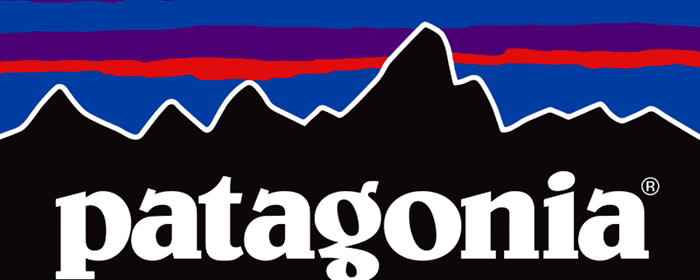
Founder Yvon Chouinard wrote a book called ‘Let My People Go Surfing’ which reflects the ethos of Patagonia. They offer onsite childcare and support and flexible work schedules. Employees are encouraged to do the things they love, and are actively encouraged to go out and surf. They’re a business who put their employees first. They let employees shape work around their lives, not their lives around work.
Chounard also gives advice on the importance of hiring the right employees.
“Hire the people you trust, who are passionate about their job, passionate about what they’re doing. Just leave them alone, and they’ll get the job done.”
Cisco
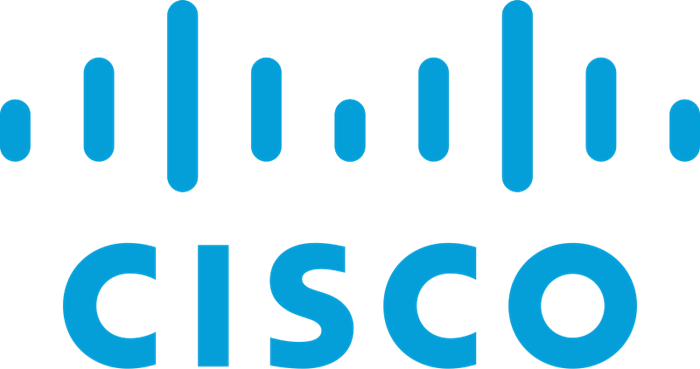
Named one of the best workplaces in 2019, here’s what Cisco employees have to say about working for the company:
“They're a company that cares deeply for its employees and the world at large. The shift for all employees to work from home this year was a breeze. We’re the tech behind remote work and Webex, Cisco encourages people to work from anywhere. Something else I love that I don’t often see, is that Cisco upholds sustainability efforts by providing employees with tools like reusable coffee mugs which in turn reduce plastic waste. There are so many reasons I love working at Cisco! To me, it was my dream and having Cisco named the #1 World’s Best Workplace two years in a row makes me so happy. I have always known this, now the world does too.”
In N Out Burger
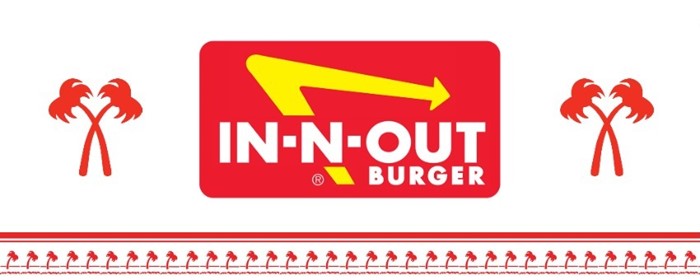
In N Out is recognised for its strong benefits and pay packages. They also have a family style culture that celebrates its workers. It values all of its, employees giving those who are part time paid holiday and flexible schedules. Who doesn't love free food? Employees get free food working at In N Out. Employees also have the opportunity to advance their careers, with training and support available.
Hubspot
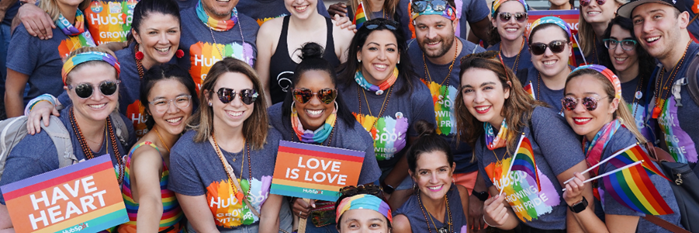 Hubspot is a leading organization for employee happiness and engagement. They offer some great learning and development initiatives. They have a free books programme, master classes and tuition reimbursement. This means employees can continually develop their skills. Hubspot sees remote work as the future and even has a dedicated Remote Work & Inclusion programme manager. This ensures that their remote work experience is the best it can be.
Hubspot is a leading organization for employee happiness and engagement. They offer some great learning and development initiatives. They have a free books programme, master classes and tuition reimbursement. This means employees can continually develop their skills. Hubspot sees remote work as the future and even has a dedicated Remote Work & Inclusion programme manager. This ensures that their remote work experience is the best it can be.
Salesforce
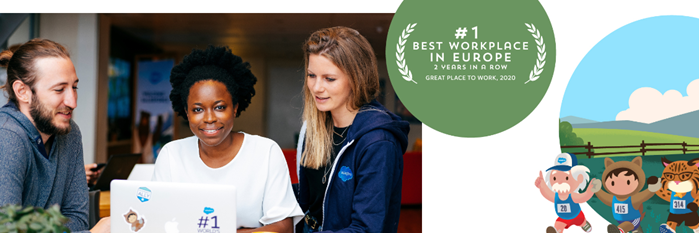
90% of employees at salesforce say it’s a great place to work compared with an average of 59% at a typical U.S based business. It’s been voted as one of the best places to work for a huge variety of demographic groups - women, millennials, parents. But what makes it so special? A good company culture. Leadership promoting company values. Benefits that look after employees. Employees receive health insurance, family care, unlimited holiday, educational reimbursement and so much more.
AirBnB
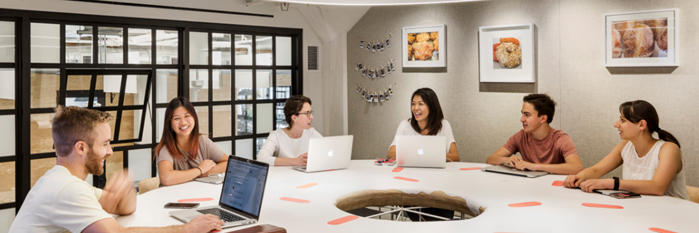 Employee experience is an integral part of Airbnb’s purpose, it relies on EX to build itself as a brand. Airbnb has a dedicated Employee Experience team. They combined HR and ‘Ground Control’ teams who are now responsible for bringing the company culture to life.
Employee experience is an integral part of Airbnb’s purpose, it relies on EX to build itself as a brand. Airbnb has a dedicated Employee Experience team. They combined HR and ‘Ground Control’ teams who are now responsible for bringing the company culture to life.
The onboarding is a week-long experience which aims to inspire a sense of belonging. It introduces hires to Airbnb’s values and purpose.
The food served in the Airbnb cafe is inspired by a different destination every day. Offices are made to make employees feel at home. Employees can practice yoga, visit the library, write on the walls and go and relax in the green atrium.
It’s no wonder that the company received 180,000 CVs for 900 open positions.
Oak Engage
 We couldn’t list a range of companies and not mention our own culture here at Oak could we? Here at Oak we’re incredibly proud of the experience we provide our employees. Here at Oak it’s all about hiring the best and the brilliant, and nurturing those employees. We offer employees complete flexibility in how they work. We also offer unlimited holidays as well as Oak Bank holidays throughout the year.
We couldn’t list a range of companies and not mention our own culture here at Oak could we? Here at Oak we’re incredibly proud of the experience we provide our employees. Here at Oak it’s all about hiring the best and the brilliant, and nurturing those employees. We offer employees complete flexibility in how they work. We also offer unlimited holidays as well as Oak Bank holidays throughout the year.
Our wellness subsidies mean employees can invest in their health and pursue something they love.
Want a great employee experience? Why not check out some of the open vacancies we have here at Oak and become part of an ever-growing team.
